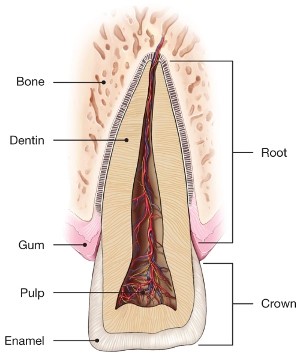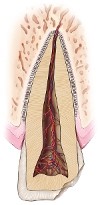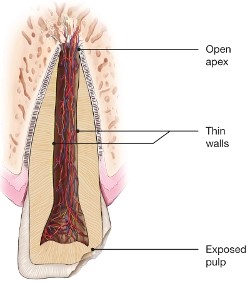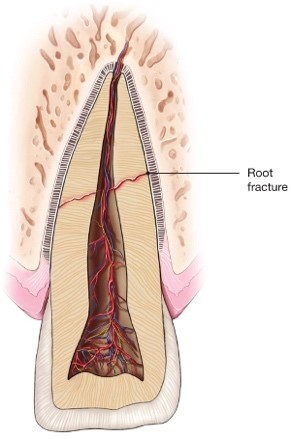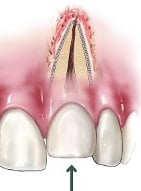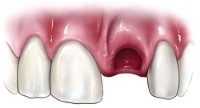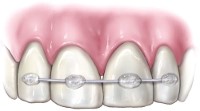Dental Traumatic Injuries are classified and categorized by their type and location of the injury on the tooth.
A chipped tooth (or crown fracture) is a type of fracture on the top (crown) of the tooth that involves the enamel, dentin, or nerve (pulp) with loss of tooth structure. If the pulp is involved then either full, or partial (pulpotomy) root canal treatment is needed. This is done to remove any portion of the pulp which has already been contaminated by bacteria from the oral cavity, in order to prevent any future tooth infection.
If a crown fracture involving the pulp (complicated crown fracture) occurs in a tooth of a young patient where the root of the tooth is not fully developed (open apex), then everything will be done to ensure the remaining pulp stays healthy and bacteria free (vital pulp therapy). A healthy pulp is what will allow the tooth and root to fully develop.
A root fracture (horizontal root fracture) is a type of dental traumatic injury that typically results from a horizontal force directed to the tooth. This fracture in the root divides the tooth into two segments. If no sign of infection is present, then treatment consists of reposition the top (coronal) segment of the tooth and splinting it for typically 4 weeks. If infection is present then root canal treatment, and sometimes endodontic surgery, may be needed.
Dislodged teeth (or luxated teeth) is a type of dental traumatic injury where the tooth becomes displaced from its socket (alveolus), but still remains in the socket, as a result of acute trauma. This displacement can be front, back, or to the side (lateral luxation), further into the socket (intrusion), or partial out of the socket (extrusion).
Luxation injuries are usually sensitive to touching, loose (mobile), and displaced. Treatment involves repositioning the tooth to its proper place, and placing a splint for usually 2 weeks. Root canal treatment may be needed depending on signs, symptoms, and test results from diagnostic tests.
Knocked out teeth (avulsion) is a type of dental traumatic injury in which there is a complete separation of the tooth from its socket (alveolus). The treatment for avulsion depends primarily on how long the tooth has been out of the socket (time), what the tooth was placed in (storage medium) on the way to the dentist, and if the tooth is fully developed or not.
Ideally the tooth should not stay dry for longer than 1 hour as this dries out and kills the cells on the root surface which are needed for the best outcome of treatment. It is best to store the tooth in a solution on your way to the dentist’s office. Common storage mediums that one would have readily available include milk, saliva, and saline. Do NOT use water, as this will actually harm the cells on the root.
Treatment at the dental office include cleaning the tooth, replacing it back in the socket, and splinting for 2 weeks. An antibiotic prescription will also be given, as well as a recommendation of a soft diet for 2 weeks. Typically root canal treatment is needed within a week’s time, unless the patient is young and the tooth is not fully developed.
After treatment of dental traumatic injuries follow-up (recall) appointments are needed to ensure that health of a tooth remains, and to see if further treatment is needed. It is imperative to come to your recall appointments
